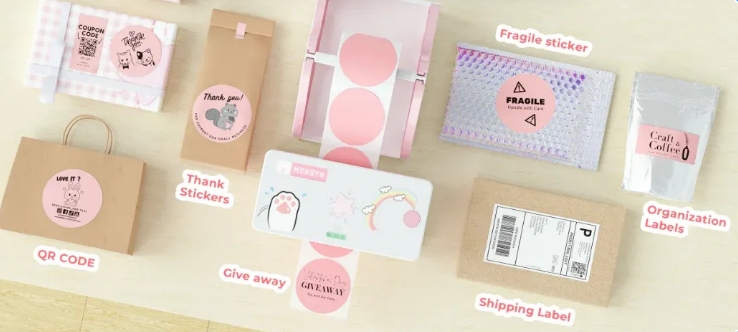
In the ever-evolving realm of digital marketing, the ascent of connected TV (CTV) offers brands a crucial opportunity to ride the wave and intricately grasp and harness the transformative potential inherent in this platform. Beyond being a fleeting trend, CTV signifies a paradigm shift in how marketers establish connections with their audiences. This article endeavors to unravel the myriad advantages of CTV in contemporary marketing and scrutinize the crucial CTV ad specifications that serve as the cornerstone for achieving success.
The Proliferation of CTV in Modern Marketing
Connected TV is not a fleeting trend; it represents a fundamental shift in consumer behavior, with millions choosing this medium to consume their content. For marketers, CTV advertising is more than an opportunity; it’s an invitation to enter the intimate spaces of their target audience’s homes through immersive, high-definition ads. These ads can be intricate, interactive, and precisely tailored to capture attention and drive engagement.
As more CTV companies develop solutions for advertisers, the impact of CTV in modern marketing is quantifiable, evident in the year-on-year increases in ad spend and viewership. Beyond the financial metrics, CTV enables marketers to target audiences with unprecedented precision. This precision goes beyond demographics, allowing for segmentation and targeting based on rich first-party data or robust third-party data partnerships. The result is not just reaching an audience but connecting with individuals personally.
The transformative nature of CTV goes beyond traditional television advertising. It elevates the viewing experience from passive to interactive and immersive. No longer are ads shouting into the void; they become integral parts of the viewer’s experience, adding value and enhancing brand perception. Moreover, the wealth of data generated by CTV analytics provides marketers with actionable insights, dissecting viewer behaviors, engagements, and conversions to inform future campaign strategies.
In delving deeper into the impact of CTV, it becomes imperative to acknowledge the platform’s capacity for personalization. Marketers can now craft tailored ads based on user preferences and behaviors, creating a previously unimaginable engagement level. This enhances the viewer’s experience and ensures that the content presented is more likely to resonate, fostering a deeper connection between the brand and the audience.
The immersive nature of CTV advertising extends beyond the living room. With the proliferation of mobile CTVs, marketers now have the opportunity to reach consumers wherever they are. This flexibility in consumption means that the audience is no longer confined to a specific physical location or time, opening up new possibilities for engagement.
The Fine Print: Understanding Essential CTV Ad Specs
Ad Format and Length Requirements
Crafting ads resonating with CTV viewers requires a meticulous understanding of ad specifications. Far from being bureaucratic hurdles, these specifications serve as the canvases on which brands can artfully deliver messages that captivate and convert.
In the world of CTV, compliance with format and length standards is one of the initial factors that can make or break an ad campaign. These standards are not arbitrary; they are designed to enhance the user experience and ensure that ads are displayed correctly across diverse networks and devices.

The digital realm allows flexibility, but CTV ad lengths often align with traditional standards. Unskippable 15-second ad spots are ideal for delivering a quick, punchy message that engages without overstaying its welcome. For advertisers with more to say, the 30-second spot offers additional room to tell a compelling story and may be better suited for complex or high-involvement products and services. However, exceeding these time limits, especially on platforms with shorter average viewing times, poses the risk of user disengagement.
The importance of ad format and length cannot be overstated. It’s not just about meeting industry standards; it’s about understanding the psychology of viewer engagement. A 15-second unskippable ad ensures that the viewer is captivated from start to finish, providing a brief but impactful brand interaction. On the other hand, a 30-second spot allows for a more nuanced storytelling approach, resonating with audiences who seek a deeper connection with the brand.
The Spectrum of Ad Formats
The choice of ad format plays a crucial role in aligning with the content consumed and the desired viewer action. Skippable video ads work well with long-form content but require a compelling hook to prevent viewers from skipping. Non-skippable video ads may be more suitable for shorter content, where viewers expect a more condensed ad experience.
While sometimes perceived as annoying, interactive overlays can be highly effective when used sparingly and appropriately. A well-timed call-to-action (CTA) overlay or a brief interactive experience creates engagement without being intrusive. The key is always choosing formats that complement the content and respecting the viewing experience.
The dynamics of ad formats go beyond mere technicalities; they play a pivotal role in the viewer’s journey. A skippable video ad, strategically placed in long-form content, acknowledges the viewer’s desire for control while presenting an opportunity for the brand to capture attention with an engaging hook. Non-skippable video ads, though potentially interruptive, align well with shorter content, ensuring the viewer receives a concise but impactful brand message.
Resolution and Aspect Ratio Considerations
Ensuring optimal display quality is paramount for brand credibility and consumer perception. With various CTV devices and screen sizes in play, understanding resolution and aspect ratio specifications is essential.
High-definition ads (720p or higher) are recommended to ensure quality and readability across different screens. The right resolution enables a clear call to action, contributing to the ad’s effectiveness. However, balancing this with file size limitations is crucial to prevent buffering issues or degraded video quality during streaming.
Aspect ratios affect how the ad is displayed and impact the viewer’s perception. The 16:9 aspect ratio is ideal for a cinematic experience and is widely compatible with CTV platforms. Yet, the introduction of vertical video watch experiences on mobile CTVs suggests that a 9:16 ratio might capture the attention of certain viewers and maximize screen real estate.
In a world with limited attention spans, the importance of resolution and aspect ratio cannot be overstated. High-definition visuals ensure that every detail is crisp and clear, capturing the viewer’s attention from the first frame. The strategic use of aspect ratios goes beyond technical specifications; it influences the overall viewing experience, contributing to the emotional resonance of the ad.
Audio and Video Specifications
Creating a memorable ad experience often involves engaging multiple senses. The right audio and video specifications can intensify the impact of a CTV campaign, turning a passive viewer into an active participant.
Audio quality matters, even when visuals initially capture the audience’s attention. Crystal-clear sound that supports the visual narrative without overpowering it is crucial. Ensure that audio is encoded correctly to accommodate different stereophonic configurations without distortion, especially if your CTA relies on verbal prompts.
Engaging video content that tells a story or showcases products creatively can make a significant difference. High contrast and vibrant colors can capture attention, particularly for demographics that skew younger or spend substantial time online. Test your visual components on various screens and under different lighting conditions to ensure they maintain their impact.
The synergy between audio and video specifications is the heartbeat of a compelling CTV ad. A harmonious blend ensures that the viewer is visually captivated and emotionally immersed. The audio, supporting the visual narrative, adds depth to the storytelling, creating a multisensory experience that lingers in the viewer’s memory.
Interactive Features and CTAs
Making an ad interactive can significantly boost viewer involvement and conversion rates. Smart use of interactive overlays or seamless transitions into engaging content can turn a passive viewer into an active participant in your brand story.
When creating an interactive ad, the timing and relevance of user engagement are paramount. Inappropriate or poorly timed CTAs can negatively impact the user experience. Utilize data from previous campaigns and A/B testing to determine the right spots for interactivity. Ensure the user journey from interaction to the desired action is seamless to prevent drop-offs.

The realm of interactivity opens doors to a deeper level of engagement. It’s not just about displaying a message but inviting the viewer to actively participate in the brand narrative. Careful consideration of interactive features, coupled with data-driven insights, ensures that each viewer interaction contributes meaningfully to the overall brand experience.
The call to action is the culmination of your storytelling. It should be compelling and straightforward, providing the viewer with an unmistakable path to follow if they’re interested in learning more or making a purchase.
Conclusion
Crafting a successful CTV ad campaign is a delicate balance of technical know-how and creative finesse. Ad specifications may seem like minutiae, but they are the unsung heroes ensuring your ad performs as intended. From the first frame to the last click, every bit of your ad needs care to connect with your audience and reach your goals. As the world of digital marketing continues to evolve, jumping on the CTV train and understanding its ad specs is the way to stay ahead and connect with your audience in cool ways.
The key takeaway? CTV isn’t just a trend; it’s a big change, opening new ways to connect with your audience. So, grab those CTV ad specs, get creative, and let your brand shine in digital advertising!










